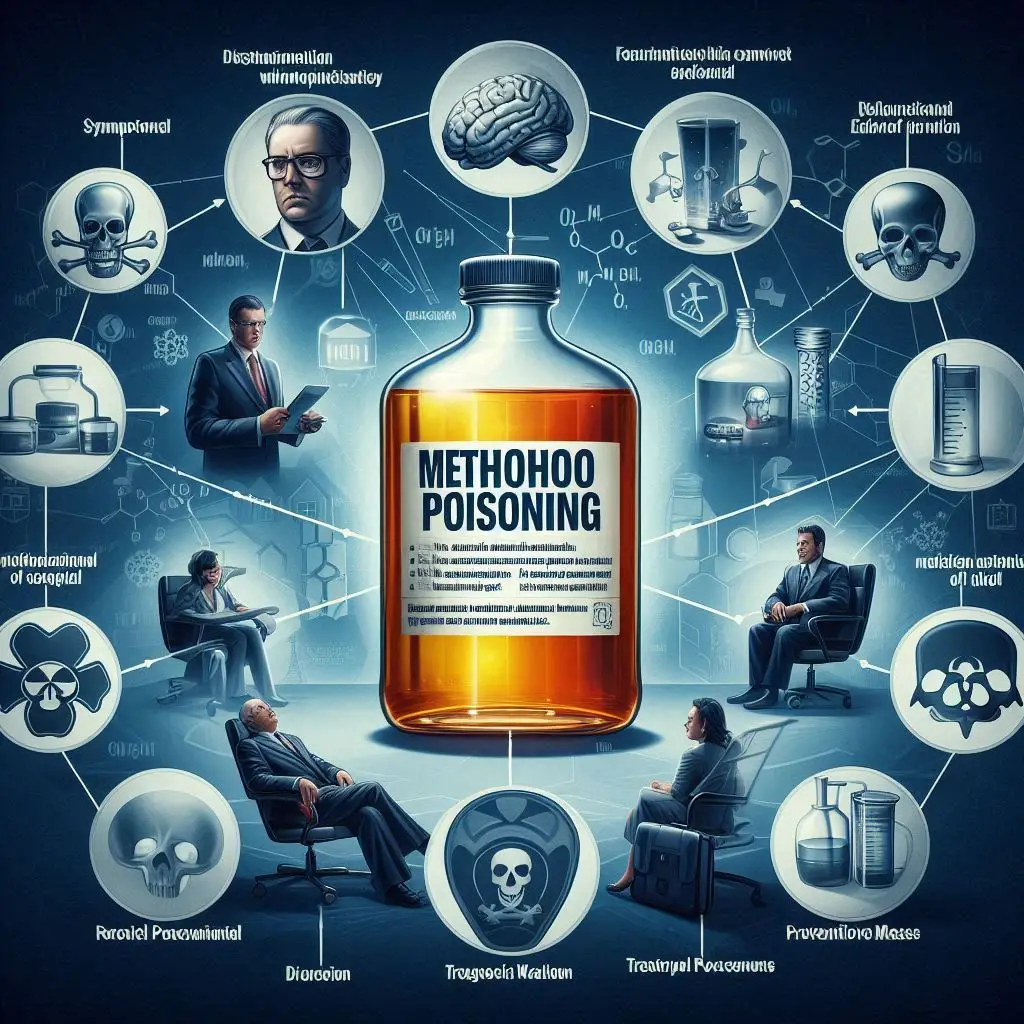
Methanol poisoning
This article will provide a comprehensive overview of methanol poisoning, addressing its root origins, symptoms, diagnostic procedures, therapeutic options, and preventative measures.
Intoxication with methanol is a serious medical illness that has to be diagnosed as quickly as possible and treated appropriately in order to avoid life-threatening consequences. Education of the general public, precautions used while handling items that contain methanol, and responsible consumption of alcohol are all essential parts of the preventative process. When there is a possibility of being exposed to methanol, it is imperative to seek medical assistance as soon as possible. An early diagnosis and treatment may considerably enhance the patient's chances of making a complete recovery and lessen the severity of any possible effects of methanol poisoning.
Methanol, which is also known as wood alcohol, is an extremely poisonous alcohol molecule that may cause serious poisoning if it is breathed, swallowed, or absorbed through the skin. It is most often used in the production of wood alcohol. Poisoning from methanol is a major problem for the public's health since it may result in serious health consequences and, in rare instances, even cause death.
Methanol poisoning may be caused by the following:
Intoxication with methanol is most often brought on by prolonged contact with chemicals that contain methanol. The following are some common sources of methanol:
goods for Industry and the Home You may find methanol in a variety of goods for industry and the home, including windshield washer fluid, antifreeze, and several cleaning solutions.
Alcohol That Has Been Adulterated or Fake Methanol may be purposely Added to rare Alcoholic drinks, Especially Illegally Produced or Fake Spirits In rare situations, methanol is purposely added to alcoholic drinks. This is often done in an effort to lower manufacturing costs, but it places a substantial risk on the shoulders of the end users.
Chemical Accidents: Accidents in industrial settings involving the spill or release of methanol may lead to exposure, particularly for personnel and first responders to the scene of the accident.
Toxic effects of methanol include the following:
Poisoning from methanol may present itself with a broad variety of symptoms, some of which might develop over time, making it difficult to make an early diagnosis. Among the most common symptoms are:
In the early stages of gastrointestinal distress, frequent first symptoms include nausea, vomiting, stomach pain, and diarrhea.
Neurological Symptoms The breakdown of methanol in the body results in the formation of formaldehyde and formic acid, both of which have the potential to bring on neurological symptoms such as headache, dizziness, disorientation, and visual problems.
Inhaling methanol may lead to respiratory distress as well as damage to the lungs, making it possible for methanol poisoning to induce these symptoms.
Hypotension, often known as low blood pressure, and arrhythmias are both potential cardiovascular symptoms.
Acidosis Metabolique Methanol poisoning often results in metabolic acidosis, which is a disorder defined by an imbalance in the acid-base state of the organism and may be fatal.
Methanol poisoning may be diagnosed as follows:
The clinical examination as well as the laboratory tests are both necessary components in the diagnostic process for methanol intoxication. The following are important diagnostic steps:
Medical History and Physical Examination: The healthcare professional will evaluate the patient's symptoms and ask about any possible exposure to methanol.
Tests on the Blood Blood tests have the ability to detect increased amounts of methanol as well as its hazardous metabolites, such as formaldehyde and formic acid.
Blood gas analysis is a useful diagnostic tool for determining the presence of metabolic acidosis.
Osmolal Gap: An increased osmolal gap is a typical result in the laboratory in cases of methanol poisoning.
Exam of the Eyes Formaldehyde's potential to cause particular eye findings, such as damage to the optic nerve, may be uncovered by a thorough eye exam.
Methanol poisoning may be treated in the following ways:
In situations of methanol poisoning, prompt treatment is essential for preventing serious consequences and lowering the chance of dying from the overdose. The following are some treatment strategies:
Lavage of the Stomach: In situations of recent consumption, removing methanol from the stomach may be accomplished using a process called lavage of the stomach.
Activated Charcoal: This might be given to the patient in order to absorb any methanol that is still present in the stomach.
These drugs are used to slow the metabolism of methanol, which enables the body to eliminate it without turning it into harmful metabolites. Fomepizole or ethanol are two examples of such treatments.
Hemodialysis: The process of removing methanol and its metabolites from the circulation by means of hemodialysis is often required, especially in more severe instances.
Patients may need supportive care, which may include therapy for particular symptoms like seizures or arrhythmias, as well as intravenous fluids, electrolyte correction, and repair of any imbalances in their body's electrolytes.
Protecting Yourself from Methanol Poisoning:
The prevention of methanol poisoning requires a variety of approaches, including the following:
When dealing with goods that include methanol, either in an industrial or a domestic context, it is essential to wear the right protective equipment and adhere to all safety rules.
Methanol-containing substances should be stored in a secure location, out of the reach of minors, and in containers that are clearly labeled.
When purchasing and drinking alcohol, consumers should make sure that the supplier can be trusted and that the product has the appropriate labeling. This is particularly important in areas where there is a risk of purchasing fake alcohol.
Education and Awareness efforts for the Public: Education and awareness efforts for the public may help alert individuals about the hazards connected with items that include methanol and fake alcohol.

